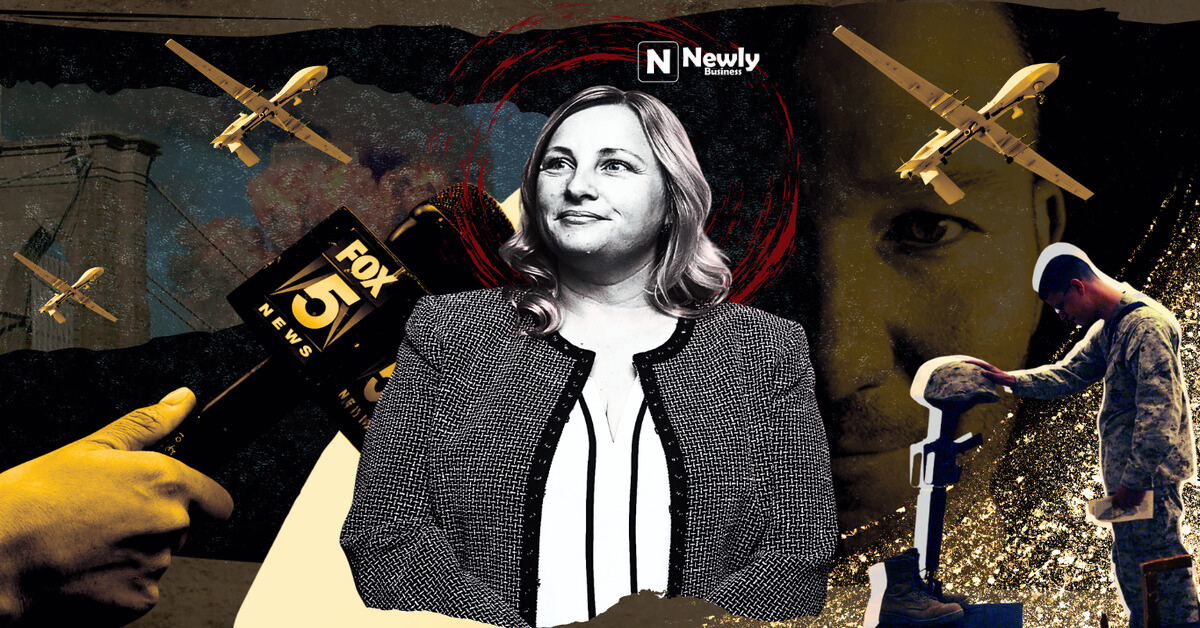When you hear the name Sarah Adams CIA, your mind may not immediately light up like it does for other flashy agency figures in popular culture. Yet behind this calm, unassuming name lies a story of grit, precision, and the relentless pursuit of truth within the walls of one of the most secretive organizations in the world. Whether you are intrigued by global security, women in intelligence, or the evolving mission of the agency, Sarah Adams CIA becomes a window into how intelligence work shapes geopolitics while deeply affecting the lives of those in the field.
In this detailed exploration, we will uncover who Sarah Adams is, her background, her pivotal role, controversies, contributions to the war on terror, and how her name continues to echo across policy discussions, security briefings, and within conversations of women breaking barriers in national security.
Who Is Sarah Adams In The CIA Landscape
Sarah Adams CIA is not just a keyword for the search engines; it symbolizes a real person navigating the pressure-cooker environment of intelligence operations. Her journey into the agency came through a strong academic background and an unwavering interest in counterterrorism, counterintelligence, and the mechanisms through which information protects nations.
Sarah’s early career did not begin with her immediately stepping into high-risk field operations. She started like many young professionals, working in analytical positions, gradually sharpening her understanding of geopolitics, extremist networks, and the sensitive nature of intelligence gathering. Her entry into the agency aligned with post-September 11 shifts when the CIA was undergoing a massive transformation in its operations and mindset.
Over time, Sarah Adams CIA became known internally for her commitment, focus, and ability to connect seemingly unrelated intelligence dots into actionable frameworks. She developed a reputation not only for her analytical sharpness but also for her courage to challenge assumptions, a trait necessary in a field where tunnel vision can cost lives.

The Path To Becoming A CIA Analyst And Field Specialist
Becoming part of the Sarah Adams CIA narrative is a lesson for many aspiring intelligence officers. The road to joining the agency is layered with rigorous background checks, intense physical and psychological evaluations, and a commitment to serving in an environment where one mistake can alter diplomatic ties or operational safety.
Sarah’s commitment to advancing within the agency reflected her understanding of the mission beyond the glamour portrayed in movies. Her focus was on the human aspects of intelligence – developing networks, ensuring the safety of assets, and using advanced technologies to predict and prevent threats. Her colleagues often mentioned how her office walls were lined with maps, red string lines connecting cells across regions, showing how deep she was in the work of counterterrorism.
While many assume intelligence gathering is only about spying, for Sarah Adams CIA, it was about building narratives from fragments, understanding cultural and linguistic nuances, and using information to preempt threats before they became headlines.
Sarah Adams CIA And The Benghazi Context
One of the pivotal chapters associated with Sarah Adams CIA involves her role during and after the 2012 Benghazi attack. Her insights and commitment during that period brought her name into public discussions, where many analysts and the public began to understand the complexity of intelligence failures and successes tied to this tragic event.
Sarah Adams was part of the team responsible for investigating extremist networks in Libya and across North Africa, focusing on those believed to be behind the attack on the diplomatic compound. Her meticulous documentation, ability to decipher patterns within terrorist communications, and her insistence on identifying actionable intelligence painted her as an indispensable asset to the agency during a time of intense scrutiny.
However, the Benghazi context was not just about operations. It highlighted the limitations and internal conflicts within agencies, the friction between ground operatives and policymakers, and the struggle between operational truth and political narratives. Through Sarah Adams CIA, we glimpse how the people inside these structures navigate ethical challenges while staying focused on preventing future attacks.
The Role Of Women In Intelligence And How Sarah Adams Shapes It
The story of Sarah Adams CIA also becomes a story of women in intelligence – a world still heavily dominated by men but gradually shifting due to voices like hers. Sarah’s presence and authority within operational discussions, field planning, and post-operation analysis showcased her as a role model for younger women entering the field.
Her contributions extend beyond mission reports; she often emphasized the need to consider the cultural and societal contexts while operating in foreign environments. This approach allowed her and her teams to establish effective informant networks while respecting local dynamics, proving that intelligence work is as much about human empathy as it is about hard data.
Sarah has spoken, albeit carefully, about the mental toll of intelligence work and the pressure of carrying secrets that affect national security. She highlighted the importance of mental resilience, the need for mentorship within the agency, and a systematic approach to career growth for women aspiring to roles within high-pressure environments like the CIA.
Contributions To Counterterrorism And Modern Intelligence Practices
The term Sarah Adams CIA is often tied to modern counterterrorism practices, especially in identifying sleeper cells, tracking financial flows connected to terrorism, and refining interrogation protocols to align with international laws while maintaining effectiveness.
Sarah worked closely with task forces focusing on counterterrorism, ensuring inter-agency coordination to improve response times to emerging threats. She advocated for real-time data sharing, pushed for advanced technology integration into field operations, and helped develop training protocols for analysts to detect radicalization patterns online.
One of her significant contributions was her work on mapping extremist recruitment patterns using open-source intelligence, which many in the agency consider a breakthrough in countering propaganda efforts by terrorist organizations. Her ability to merge digital footprints with on-ground informant reports ensured actionable intelligence that directly led to the dismantling of multiple extremist cells.
Public Perception And Media Portrayal
Despite her significant contributions, the name Sarah Adams CIA does not appear in the limelight as much as other intelligence figures, primarily due to the nature of the work she does. However, several documentaries, news reports, and investigative pieces have discussed her role indirectly, praising the dedication and sacrifices intelligence professionals make behind the scenes.
Media portrayals often fail to capture the mundane yet critical aspects of her work – the long hours analyzing data streams, validating sources, and navigating bureaucratic hurdles. Still, those who have worked with her acknowledge that her integrity and quiet persistence define her contribution more than any headline ever could.
Challenges Faced Inside The Agency
Working within the CIA is not a straightforward path, and Sarah Adams CIA faced multiple challenges, including bureaucratic delays, inter-agency disagreements, and at times, operational failures. The Benghazi incident, for instance, was a painful reminder of the limitations even the best operatives face when local conditions, political constraints, and misinformation collide.
Sarah has navigated periods where her recommendations were sidelined or delayed, only to discover later that acting sooner could have prevented incidents. These moments became lessons in patience, resilience, and continuous improvement of processes within the agency. She also emphasized post-operation debriefs, helping create a culture of learning rather than blame.
The Legacy And Ongoing Influence Of Sarah Adams CIA
Today, when you hear Sarah Adams CIA, it resonates with the ethos of duty and the complexities of intelligence work in an ever-evolving geopolitical landscape. Her focus on using intelligence not as a tool for power but as a shield for national and global security has influenced many upcoming analysts and operatives within the agency.
Her advocacy for ethical intelligence practices, respect for human rights during operations, and emphasis on mentorship for young professionals within the agency ensures that her legacy is not just operational but also cultural. Her influence extends into policy discussions, shaping how the agency interacts with other branches of government while preserving the integrity of intelligence work.
Why The Story Of Sarah Adams CIA Matters Today
In a world where disinformation is rampant and geopolitical tensions are rising, figures like Sarah Adams CIA represent the quiet guardians of truth. Her dedication and commitment showcase the human element behind intelligence operations, reminding us that it is people who interpret data, make judgment calls, and take risks for the safety of millions.
For students, young professionals, and even seasoned analysts looking for a model within the intelligence community, Sarah Adams CIA serves as a blueprint of resilience, focus, and integrity, showing that even in one of the most complex careers, ethical grounding and sharp analytical abilities can coexist.
FAQs About Sarah Adams CIA
Who is Sarah Adams in the CIA?
Sarah Adams is a former CIA analyst and counterterrorism specialist known for her work on extremist networks, particularly during the Benghazi attacks, and for shaping modern intelligence practices.
What role did Sarah Adams play in Benghazi?
Sarah Adams was involved in investigating and analyzing extremist networks tied to the Benghazi attacks, helping to identify those responsible and providing insights for operational and policy adjustments.
Is Sarah Adams still working with the CIA?
Publicly, Sarah Adams has transitioned to consulting and speaking roles while continuing to influence counterterrorism and intelligence practices, but details of her current operational involvement remain classified due to the nature of her work.
Why is Sarah Adams CIA important?
Sarah Adams symbolizes ethical, dedicated intelligence work within the agency, serving as a role model for women in national security while significantly contributing to counterterrorism operations.
How does Sarah Adams CIA influence modern intelligence?
Through her emphasis on actionable intelligence, ethical practices, and mentorship, Sarah Adams has helped refine how intelligence operations are conducted, ensuring a balance between effectiveness and legality.
Final Thoughts On Sarah Adams CIA
In the layered world of intelligence, Sarah Adams CIA represents more than just a name on classified documents. She embodies the quiet determination, analytical precision, and ethical backbone necessary to protect nations in a world filled with evolving threats. Her story is not just about counterterrorism but about how intelligence can be a force for good when used responsibly and intelligently.
Whether you are interested in intelligence careers, global security, or stories of individuals shaping critical operations behind the scenes, the story of Sarah Adams CIA will inspire you to appreciate the complexities and sacrifices involved in keeping nations safe while reminding us that in intelligence, the best work often goes unseen, yet it protects us every day.

